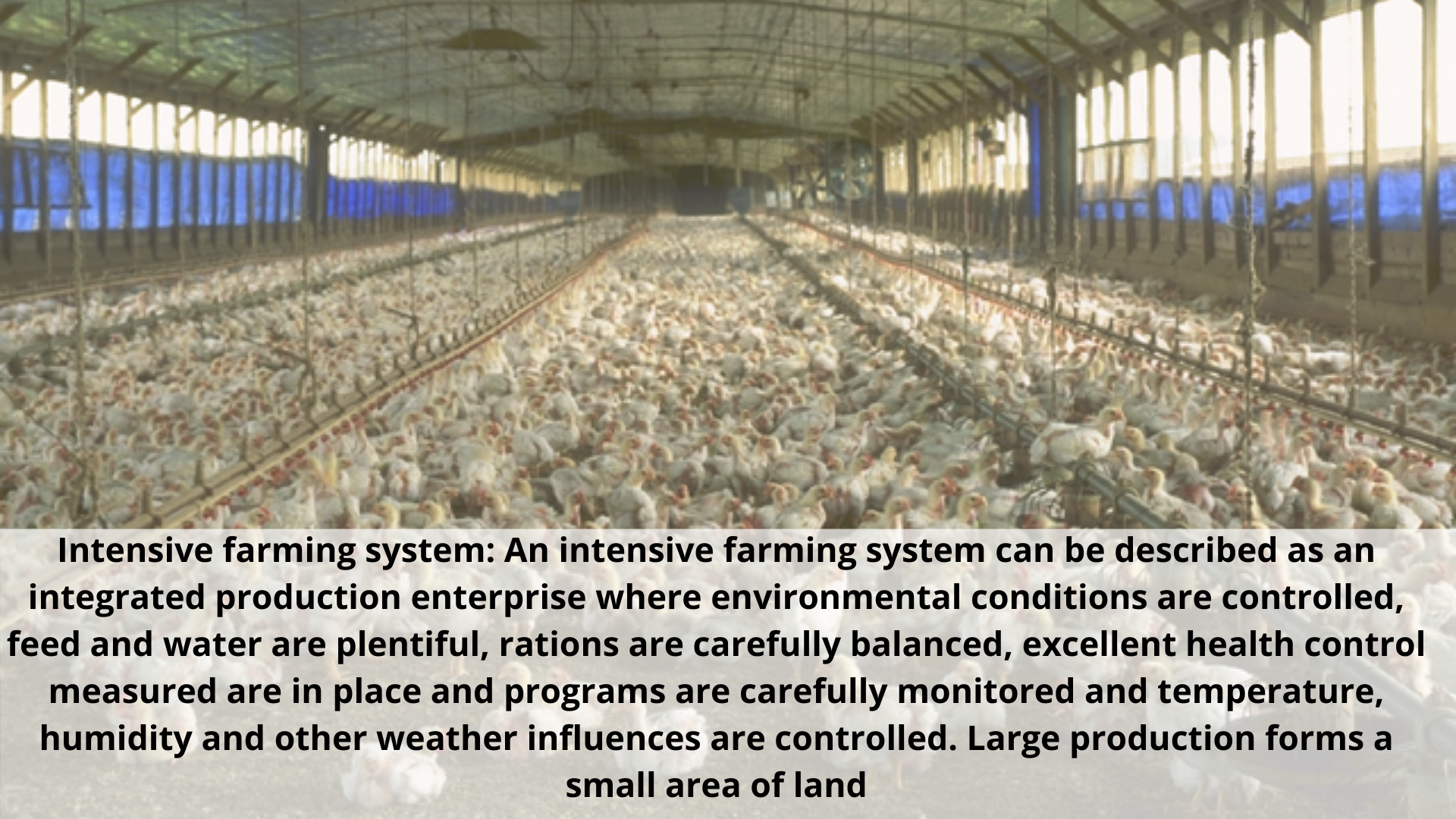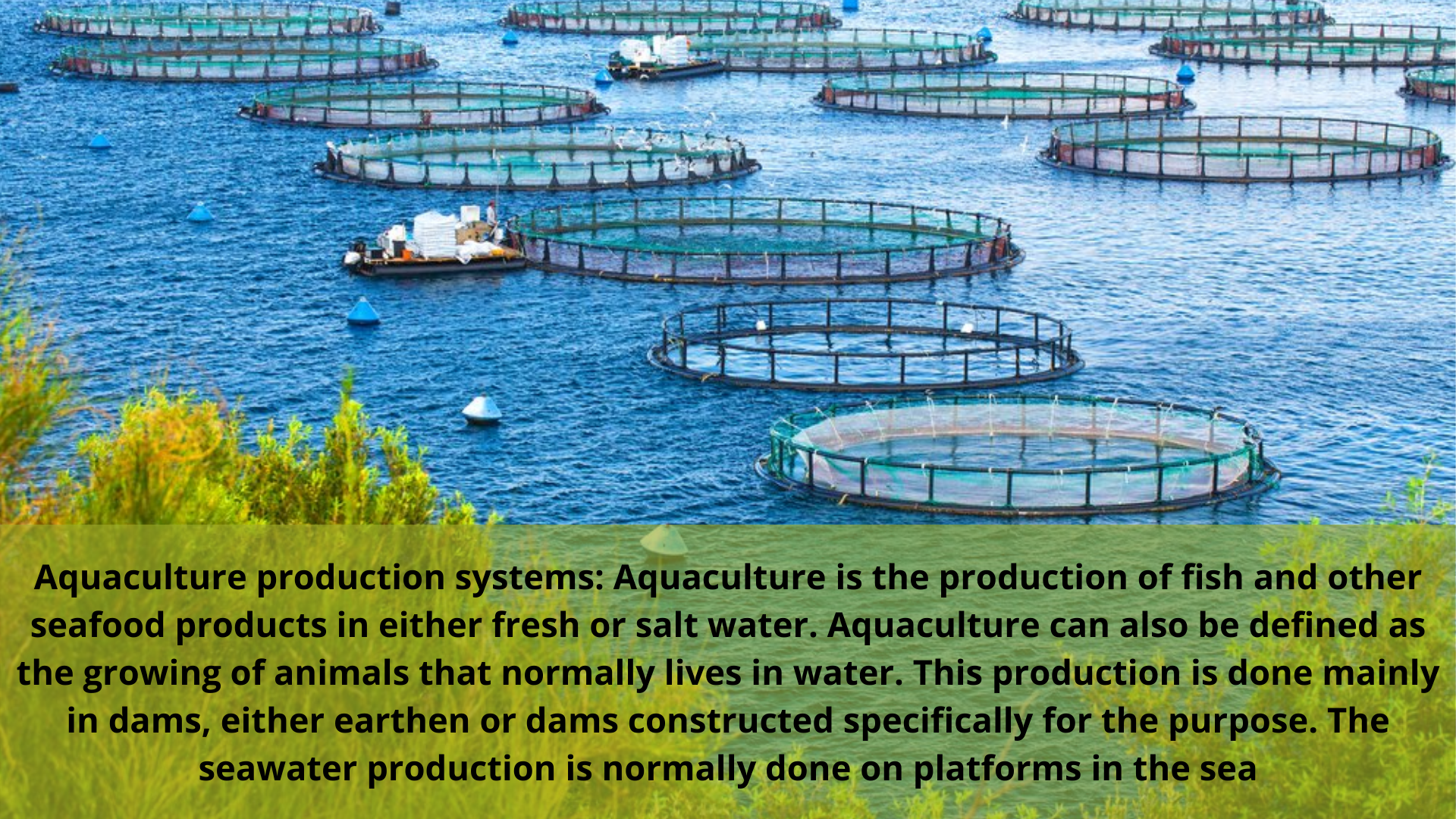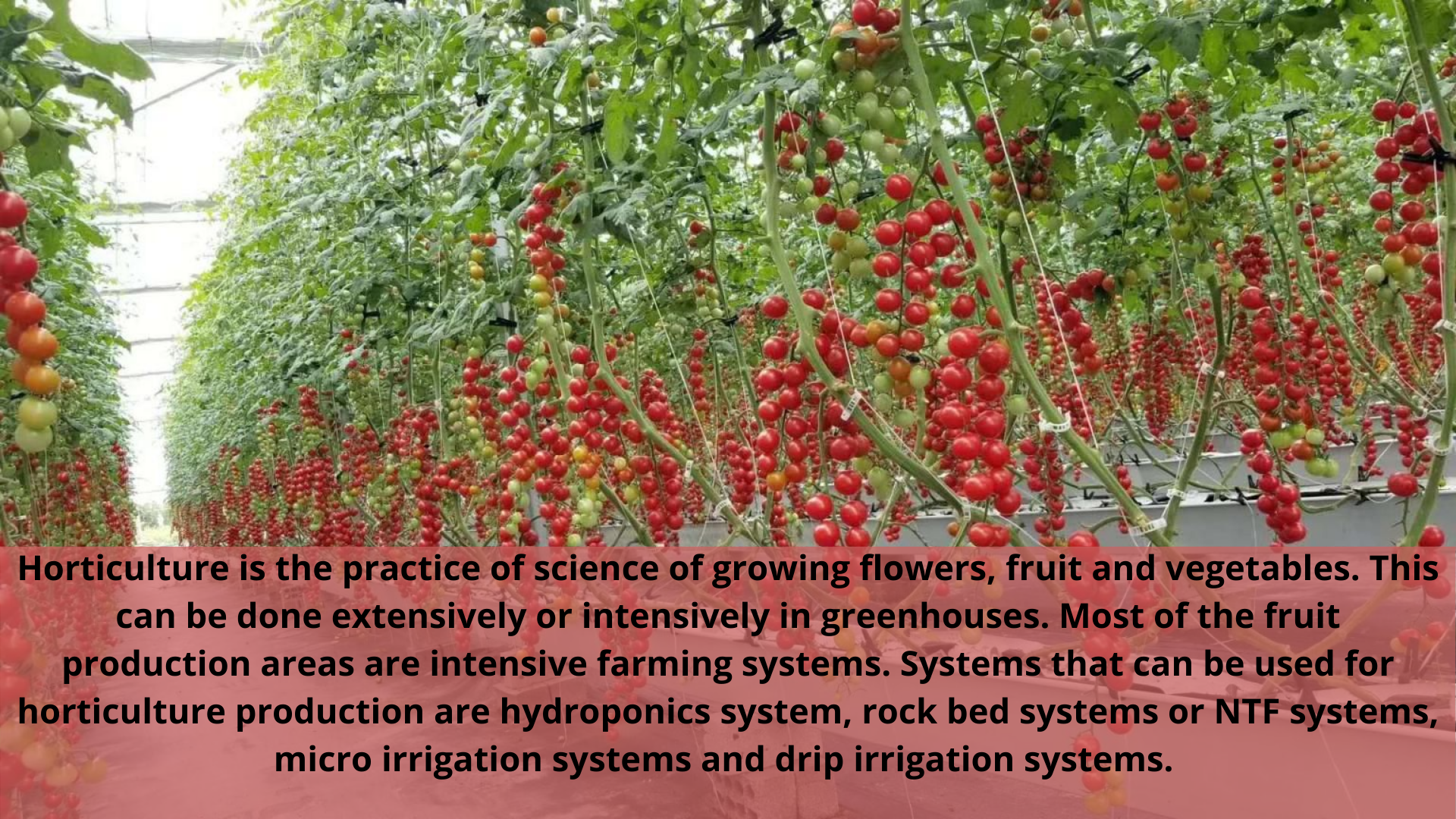
Examples of intensive animal production: systems are integrated poultry enterprise, integrated pig farming and large dairy operations, cattle and sheep feedlots.
The following is an indication of the difference between intensive and extensive system:
|
|
Intensive System |
Extensive System |
|
The management input |
Very high management input |
Low management input |
|
Area of operation |
Small area |
Large area |
|
Production levels |
Very high |
Moderate to low |
|
Cost |
High costs High Capital investment |
Less costs Low capital investment |
The following are examples of extensive farming systems:
- Crop farming
- Animal production
- Subsistent maize or sorghum production
- Beef cattle on natural grazing
- Dry land maize in the dryer areas of the RSA
- Sheep farming in the Karoo
- Farming with goats in rural areas
- Subsistent poultry farming
Factors to Considered for Intensive Crop or Animal Production
Intensive Crop Farming
- Are there natural resources available e.g. water for irrigation or high rainfall?
- What is the condition of the soil, will it sustain intensive agricultural production?
- The climate of the specific area.
- Does the climate suit the product, or must adjustments be made?
- Soil cultivation for optimal production, aim is to provide ideal environment for germination and growth
- Choice of the correct cultivar that is capable of high production
- Plant density and planting method
- Scientific fertiliser program or foliar feed program
- Weed and pest control programs and the use of technology to determine insect infestation or pheromones to attract pests Precision farming with records via satellite technology
- Harvesting of the product to ensure quality
- Value adding to the product – washing and grading of potatoes before packing
- The availability of human resources – skills of the workers
- Market for the products and distance from the market
- Input costs and cost of implements and equipment
Animal Systems
- Feeding of the animals, well balanced rations are needed to ensure fast growth Feeding system
- Total Mixed Ration (TMR) or grazing with additional concentrate feeding or intensive grazing system under irrigation.
- Climate control – provision of heat or cooling
- Inoculation and disease prevention Scientific selection and breeding
- Breeding system - AI or natural breeding
- Cross breeding or pure breeds Choice of the breed for the specific production
- Handling facilities Housing system and climate control
- Waste disposal Availability of water – will there be enough water for the animals?
- Availability of human resources and skills level
- Distance from the market and size of the market
- Input cost and cost of equipment
- Bio security measures
Factors to Considered for Extensive Crop or Animal Production
Crop Production
- Climate and rainfall - to adjust plant density, row spacing and choice of crop
- Cultivation methods to conserve moisture and to build up organic material
- Cultivars choice
- Inputs in relation to the expected yield
- Methods to reduce the runoff of rainwater and water harvesting
Animal Production Systems
- Natural resources – soil, vegetation and water
- Facilities such as camps, water provision and fire breaks
- Roads and other infrastructure- handling facilities at cattle or sheep posts needed to reduce the distance animals must walk to the handling facilities.
- Human resources and skills level of the workers
- Fences to protect the animals from predators
- The use of natural shade and wind breaks for animal protection against climatic conditions
Layout of the farm can influence the following:
|
Productivity |
Poor layout can affect production negatively as it can lead to waste of energy that could be used for production. Waste of time and additional work from the labourers due to poor layout can also lead to lower productivity. Poor facilities or inadequate facilities can slow down the production process or effect it negatively |
|
Yield |
Animal comfort can affect the yield of production positively or negatively if animals experience discomfort Poor facilities can cause diseases such as mastitis and foot-rot - dairy cattle Cannibalism can develop in chicken runs and pigsties where animals are stressed |
|
Costs |
To cure foot-rot and mastitis is an additional cost Mortalities due to cannibalism or poor housing facilities cause a loss of income Animals that are not housed in correct facilities use more feed and energy and produce less |
|
Quality of the product |
Poor facilities or layout can result in damage to the products and it lowers the quality of the products Bad roads can damage fruit or vegetables Cooling facilities can improve the quality of the product. The lack of electricity can affect the quality of the product if it cannot be cooled for a long period |
|
Input costs |
Input costs increase due to waste if the feeding facilities are not functioning correctly. Incorrect planters or facilities can also increase the input cost. The provisioning of infrastructure is a cost that must be recovered from the product produced |
Aquaculture Production Systems

The following should be considered for the layout for an aquaculture system:
- Stable water supply and how the oxygen level of the water will be kept at the required level
- Dams for breeding and growth of the water animals
- Slaughtering and packaging facilities for the processing of the products on the farm.
- Cold storage where processed products can be stored, and the cold chain need to be maintained through the delivery process,
- Breeding dams or facility for breeding stock
- Hatchery where the eggs can be hatched, and the fingerlings can grow for the first few days
- Equipment to catch the fish
- Market for the product and the type of product the market prefers.
- The aquaculture systems can be very intensive, or it can be done expensively in the farm dam.
Aquaculture can be divided between fresh and saltwater systems.
|
Fresh Water System |
Saltwater System |
|
Catfish farming |
Avalon farming |
|
Trout farming |
Muscle farming |
|
Koi fish farming |
Scrimp farming |
|
Crocodile farming |
Ouster farming |
|
Frog farming |
|
|
Tilapia fish farming |
|
Fish farming can also be used for recreation and Agric tourism, for the anglers to catch fish such as Bass, trout and other sport fish. Crocodile farms are usually a tourist’s attraction.
Horticultural Production Systems

The latest trend is to produce organic fruits and vegetables where only organic fertiliser is used and pest and weeds are controlled organically or biologically. The following are some examples of products that can be produced in horticultural production systems.
|
Flowers |
Vegetables |
Fruit |
|
Roses Carnations Tulips Other Cut-flowers |
Tomatoes Peppers Egg plant Watermelons, melons Butternuts and other pumpkins, baby marrows, Cucumbers Cabbage, Cauliflower, Broccoli and Brussels sprouts |
Deciduous fruit Citrus fruit Sub-tropical fruit
|
The following need to be considered for horticultural production:
- Climatic conditions – warm and cold temperatures
- Soil – suitability for production
- Availability of water
- Combination of products Production system and production facilities needed
- Market for the product and type of product required by the market
- Disease and pest control